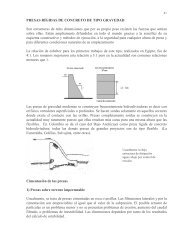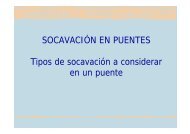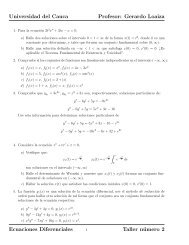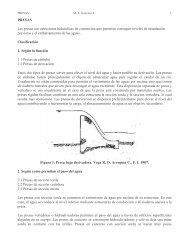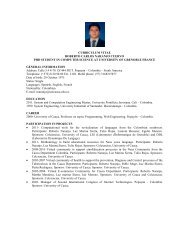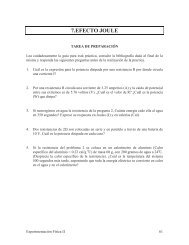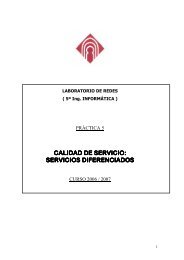Advice for the Project Management Professional (PMP)
Advice for the Project Management Professional (PMP)
Advice for the Project Management Professional (PMP)
You also want an ePaper? Increase the reach of your titles
YUMPU automatically turns print PDFs into web optimized ePapers that Google loves.
Licensed to:<br />
TABLE A-2 <strong>Project</strong> Tracking Database Tasks (continued)<br />
Order Task Name<br />
16 Control changes<br />
17 Closing<br />
18 Prepare final project report<br />
19 Present final project<br />
20 <strong>Project</strong> completed<br />
TIP<br />
Entering tasks into <strong>Project</strong> 2007 and editing <strong>the</strong> in<strong>for</strong>mation is similar to entering and editing data in an<br />
Excel spreadsheet. <strong>Project</strong> 2007, like earlier versions, includes a feature called a SmartTag, which<br />
appears, <strong>for</strong> example, when you delete a row. The SmartTag clarifies whe<strong>the</strong>r you want to delete <strong>the</strong> entire<br />
task or only clear <strong>the</strong> contents of a cell.<br />
2. Move <strong>the</strong> split bar to reveal more columns. If necessary, move <strong>the</strong> split bar<br />
to <strong>the</strong> right to reveal <strong>the</strong> entire Task Name and Duration columns.<br />
3. Adjust <strong>the</strong> Task Name column width as needed. To make all <strong>the</strong> text display<br />
in <strong>the</strong> Task Name column, move <strong>the</strong> mouse over <strong>the</strong> right-column gridline in<br />
<strong>the</strong> Task Name column heading until you see <strong>the</strong> resize pointer , and <strong>the</strong>n<br />
click <strong>the</strong> left mouse button and drag <strong>the</strong> line to <strong>the</strong> right to make <strong>the</strong> column<br />
wider, or double-click to adjust <strong>the</strong> column width automatically.<br />
This WBS separates tasks according to <strong>the</strong> project management process groups of initiating,<br />
planning, executing, controlling, and closing. These tasks will be <strong>the</strong> level 1 items<br />
in <strong>the</strong> WBS <strong>for</strong> this project. It is a good idea to include all of <strong>the</strong>se process groups because<br />
<strong>the</strong>re are important tasks that must be done under each of <strong>the</strong>m. Recall that <strong>the</strong> WBS<br />
should include all of <strong>the</strong> work required <strong>for</strong> <strong>the</strong> project. In <strong>the</strong> <strong>Project</strong> Tracking Database<br />
WBS, <strong>the</strong> tasks will be purposefully left at a high WBS level (level 2). You will create <strong>the</strong>se<br />
levels, or <strong>the</strong> WBS hierarchy, next when you create summary tasks. For a real project, you<br />
would usually break <strong>the</strong> WBS into even more levels to provide more details to describe all<br />
<strong>the</strong> work involved in <strong>the</strong> project. For example, analysis tasks <strong>for</strong> a database project might<br />
be broken down fur<strong>the</strong>r to include preparing entity relationship diagrams <strong>for</strong> <strong>the</strong> database<br />
and developing guidelines <strong>for</strong> <strong>the</strong> user interface. Design tasks might be broken down to<br />
include preparing prototypes, incorporating user feedback, entering data, and testing <strong>the</strong><br />
database. Implementation tasks might include more levels, such as installing new hardware<br />
or software, training <strong>the</strong> users, fully documenting <strong>the</strong> system, and so on.<br />
Creating Summary Tasks<br />
After entering <strong>the</strong> WBS tasks listed in Table A-2 into <strong>the</strong> Entry table, <strong>the</strong> next step is to show<br />
<strong>the</strong> WBS levels by creating summary tasks. The summary tasks in this example are Tasks<br />
1 (initiating), 5 (planning), 9 (executing), 14 (controlling), and 17 (closing). You create<br />
summary tasks by highlighting and indenting <strong>the</strong>ir respective subtasks.<br />
Copyright 2009 Cengage Learning. All Rights Reserved.<br />
May not be copied, scanned, or duplicated, in whole or in part.<br />
343<br />
Guide to Using Microsoft <strong>Project</strong> 2007



